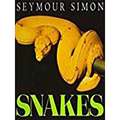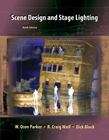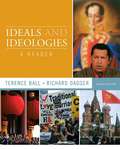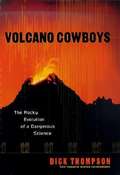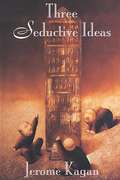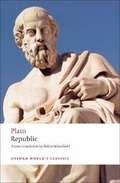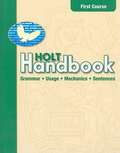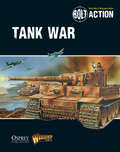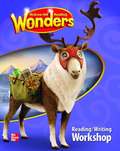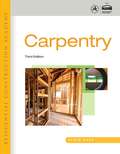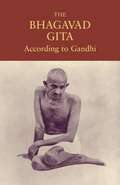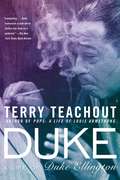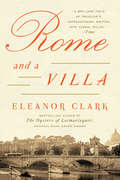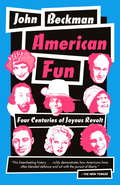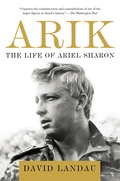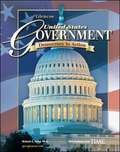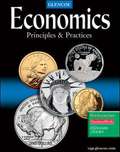- Table View
- List View
Penguins
by Seymour SimonDid you know that: Penguins are champion swimmers. They spend 75 percent of their lives in water. They are birds, but they can't fly. Penguins are classified as birds because they have feathers. Now you can explore a penguin's world by finding out how they can swim so fast, what they eat, and why people need to protect their habitats. Acclaimed science writer Seymour Simon has teamed up with the Smithsonian Institution to take you on a journey to the Antarctic region for a close-up look at one of nature's most beloved and sociable animals.
Snakes
by Seymour SimonWhat animal can smell with its tongue, swallow an animal larger than its own head, and grow to be longer than a school bus? A snake! <P><P>Pound for pound, snakes are among the strongest of animals. <P><P> Most people fear snakes, but there are only a few that are dangerous to humans. <P><P> And if snakes were to disappear, the earth would be overrun with rats and rodents. <P><P>We all must learn to appreciate these awesome reptiles as a vital part of the global balance of nature.
IMF Staff Country Reports
by International Monetary Fund StaffA report from the International Monetary Fund.
Scene Design and Stage Lighting
by W. Oren Parker R. Craig Wolf Dick BlockPacked with professional information and cutting-edge technologies, SCENE DESIGN AND STAGE LIGHTING, Ninth Edition, equips you with the most up-to-date coverage available on scenery, lighting, sound, and technology. Completely current, the exciting new ninth edition mirrors the best of real-world practices. Vibrant color production photographs support the text and spotlight examples of contemporary work. Scenery design and technology coverage includes a strong emphasis on modern technology, while changes in the lighting section reflect the latest practices. Coverage of sound for the theatre reflects the digital age in which we live and work. The text also includes an expanded section on television design, as well as greater emphasis on health and safety issues. The authors emphasize collaboration in all sections of the new text, and they provide insight via interviews with professional lighting and scenery designers in two features: "Working Professionals" and "Designers at Work. " Reflecting current professional practice, SCENE DESIGN AND STAGE LIGHTING, Ninth Edition, offers in-depth coverage of a broad range of topics, making it the most detailed and comprehensive text available in the scenic and lighting design and technology fields.
Biology (Texas)
by Alton Biggs Whitney Crispen Hagins William G. HollidayGlencoe Biology helps all students succeed with its organization around major Themes, Big Ideas, and Main Ideas of biology and its strong support for reading comprehension. This program's comprehensive content is made relevant to students through engaging real-world contexts. A wide variety of lab experiences builds strong inquiry skills. The abundance of differentiated instructional strategies helps teachers reach all learners. Seamlessly integrated technology allows teachers to save time and increase productivity.
Ideals and Ideologies: A Reader
by Terence Ball Richard DaggerA comprehensive compilation of original readings representing all of the major 'isms, Ideals and Ideologies puts students in touch with the thinkers and ideas that shape the political world.' This reader offers students a generous sampling of key thinkers in different ideological traditions and places them in historical and political context. Used on its own or with Political Ideologies and the Democratic Ideal, Ideals and Ideologies accounts for the different ways people use ideology to interpret change in the world and directly conveys the ongoing importance of ideas in politics.
Volcano Cowboys: The Rocky Evolution of a Dangerous Science
by Dick ThompsonTwenty years ago, Mt. St. Helens, in Washington State, "blew. " It was the volcano's first eruption in recorded time, although as early as 1978 a team of scientists from the US Geological Survey had labeled it "the most dangerous volcano in the Cascade Range. " In June 1991, Mt. Pinatubo in the Philippines spewed forth its own mix of ash, gases, mud, lava, and all the other debris that had been building within the mountain for centuries. Between those two events, USGS scientists had been working at warp speed to learn more about predicting violent eruptions. Data from the nation's only Volcano Center was not helpful. Work there centered on volcanoes that responded to interior pressure by quietly releasing a slow-moving flow of lava, rather than spewing its entrails out in a blast. Survey members were presented with a rare opportunity when Mt. St. Helens showed signs of activity. Camped on the mountains flanks, daring the crater itself, they dug out rocks, tended recorders, began to learn how to use newly developed instruments. Here was an active volcano, believed to be on the verge of eruption by some, if not all, experts. Along with new instruments they had computer programs that saved them days and weeks of work. They learned techniques that revealed the dates of previous major eruptions and provided patterns for future predictions. After the eruption, studying Mt. St. Helens and other volcanoes, they learned more and more. By the time a newly-active Pinatubo threatened tens of thousands of villagers and the U. S. military's Clark Air Force Base, the men of the USGS were far better able to feel secure in urging local authorities and the Air Force brass to evacuate. It was still a gamble, but the odds were far better. And the work goes on. Thompson, a veteran science reporter for Time Magazine, spent many hours with the relative handful of scientists whom he calls "volcano cowboys. " (Considering their lifestyle and their rugged "laboratories" - the volcanoes themselves - the sobriquet is earned. ) They have loaned him their field notes, and one geologist gave him his as yet unpublished autobiography. The vivid material and Thompson's skill in bringing a good story to life has resulted in a book that celebrates these "cowboys" their tough and hazardous lives and the often harrowing decisions they must make.
Go Math!
by Matt Larson Miriam A. Leiva Thomasenia Lott Adams Juli K. Dixon Anne M. GoodrowIn this mathematics program meant for 4th graders , there are hands-on activities to do and real-world problems to solve.
Three Seductive Ideas
by Jerome KaganDo the first two years of life really determine a child's future development? Are human beings, like other primates, only motivated by pleasure? And do people actually have stable traits, like intelligence, fear, anxiety, and temperament? This book, the product of a lifetime of research by one of the founders of developmental psychology, takes on the powerful assumptions behind these questions--and proves them mistaken. Ranging with impressive ease from cultural history to philosophy to psychological research literature, Jerome Kagan weaves an argument that will rock the social sciences and the foundations of public policy. Scientists, as well as lay people, tend to think of abstract processes--like intelligence or fear--as measurable entities, of which someone might have more or less. This approach, in Kagan's analysis, shows a blindness to the power of context and to the great variability within any individual subject to different emotions and circumstances. "Infant determinism" is another widespread and dearly held conviction that Kagan contests. This theory--with its claim that early relationships determine lifelong patterns--underestimates human resiliency and adaptiveness, both emotional and cognitive (and, of course, fails to account for the happy products of miserable childhoods and vice versa). The last of Kagan's targets is the vastly overrated pleasure principle, which, he argues, can hardly make sense of unselfish behavior impelled by the desire for virtue and self-respect--the wish to do the right thing. Written in a lively style that uses fables and fairy tales, history and science to make philosophical points, this book challenges some of our most cherished notions about human nature.
Republic
by PlatoRepublic is the central work of the Western world's most famous philosopher. Essentially an inquiry into morality, Republic also contains crucial arguments and insights into many other areas of philosophy. It is also a literary masterpiece: the philosophy is presented for the most part for the ordinary reader, who is carried along by the wit and intensity of the dialogue and by Plato's unforgettable images of the human condition. This new, lucid translation by Robin Waterfield is complemented by full explanatory notes and an up-to-date critical introduction.
Holt Handbook: Grammar Usage and Mechanics (Grade #7)
by Holt Rinehart Winston StaffLearn more about grammar and effective writing.
Bolt Action: Tank War
by Peter Dennis Warlord GamesTank War, the new supplement for Bolt Action, gives players the option to expand their games to a whole new level - armored warfare. Recreate such great engagements as the battle of Kursk with the scenarios, army options and special rules found in this book. Whether you want to add more armour to your existing armies or build an entirely armoured force, Tank War has you covered.
Therapeutic Exercise: Foundations and Techniques (Sixth Edition)
by Carolyn Kisner Lynn Allen ColbyThoroughly revised and updated throughout, Kisner & Colby's 6th Edition offers the most up-to-date exercise guidelines for individualizing interventions for those with movement disorders. Now with contributions from the leading experts in the field, it encompasses all of the principles of therapeutic exercise and manual therapy, including spinal surgery and spinal manipulation. This renowned manual remains the authoritative source for exercise instruction for the therapist and for patient self-management.
Reading Wonders: Reading Writing Workshop (5th Grade)
by Diane AugustLearn to understand your reading and improve your writing.
Residential Construction Academy: Carpentry (Third Edition)
by Floyd VogtBased on industry standards developed by the National Association of Home Builders and its Home Builders Institute, this comprehensive text covers the essentials of residential construction carpentry, including tools and materials, rough carpentry, and exterior and interior finish carpentry ensuring professional success on any jobsite. Extensively illustrated and succinctly written, RESIDENTIAL CONSTRUCTION ACADEMY: CARPENTRY 3e features "Procedure" sections in nearly every chapter that combine precise, step-by-step instructions with helpful drawings, making it easy to understand key concepts and master important techniques. The Third Edition includes much new and updated material, including special "green" features exploring environmentally friendly building practices, and exercises incorporating local building codes. As always, safety is strongly emphasized with specific tips and precautions in every chapter.
Algebra With Trigonometry
by Eugene Douglas NicholsLearn more about algebra and the foundations of trigonometry.
The Bhagavad Gita According to Gandhi
by Mahatma GandhiThe Bhagavad Gita, also called The Song of the Lord, is a 700-line section of a much longer Sanskrit war epic, the Mahabharata, about the legendary conflict between two branches of an Indian ruling family. Framed as a conversation between Krishna, an incarnation of the god Vishnu, and a general of one of the armies, the Gita is written in powerful poetic language meant to be chanted. Equally treasured as a guide to action, a devotional scripture, a philosophical text, and inspirational reading, it remains one of the world's most influential, widely read spiritual books.The Bhagavad Gita According to Gandhi is based on talks given by Gandhi between February and November 1926 at the Satyagraha Ashram in Ahmedabad, India. During this time--a period when Gandhi had withdrawn from mass political activity--he devoted much of his time and energy to translating the Gita from Sanskrit into his native Gujarati. As a result, he met with his followers almost daily, after morning prayer sessions, to discuss the Gita's contents and meaning as it unfolded before him. This book is the transcription of those daily sessions.From the Trade Paperback edition.
Duke
by Terry TeachoutA major new biography of Duke Ellington from the acclaimed author of Pops: A Life of Louis Armstrong Edward Kennedy "Duke" Ellington was the greatest jazz composer of the twentieth century--and an impenetrably enigmatic personality whom no one, not even his closest friends, claimed to understand. The grandson of a slave, he dropped out of high school to become one of the world's most famous musicians, a showman of incomparable suavity who was as comfortable in Carnegie Hall as in the nightclubs where he honed his style. He wrote some fifteen hundred compositions, many of which, like "Mood Indigo" and "Sophisticated Lady," remain beloved standards, and he sought inspiration in an endless string of transient lovers, concealing his inner self behind a smiling mask of flowery language and ironic charm. As the biographer of Louis Armstrong, Terry Teachout is uniquely qualified to tell the story of the public and private lives of Duke Ellington. Duke peels away countless layers of Ellington's evasion and public deception to tell the unvarnished truth about the creative genius who inspired Miles Davis to say, "All the musicians should get together one certain day and get down on their knees and thank Duke."
Rome and a Villa
by Eleanor ClarkIn 1947 a young american woman named Eleanor Clark went to Rome on a Guggenheim fellowship to write a novel. But Rome had its way with her, the novel was abandoned, and what followed was not a novel but a series of sketches of Roman life, most written between 1948 and 1951. This new edition of her now classic book includes an evocative foreword by the eminent translator William Weaver, who was a close friend of the author's and often wandered the city with her during the years she was working on Rome and a Villa. Once in Rome, the foreign writer or artist, over the course of weeks, months, or years, begins to lose ambition, to lose a sense of urgency, to lose even a sense of self. What once seemed all-consuming is swallowed up by Rome&$8212;by the pace of life; by the fatalism of the Roman people, to whom everything and nothing matters; by the sheer historic weight and scale of the place. Rome is life itself—messy, random, anarchic, comical one moment, tragic the next, and above all, seductive. Clark pays special attention to Roman art and architecture. In the book's midsection she looks at Hadrian's Villa—an enormous, unfinished palace—as a metaphor for the city itself: decaying, imperial, shabby, but capable of inducing an overwhelming dreaminess in its visitors. The book's final chapter, written for an updated edition in 1974, is a lovely portrait of the so-called Protestant cemetery where Keats, Shelley, and other foreign notables are buried.
American Fun
by John BeckmanHere is an animated and wonderfully engaging work of cultural history that lays out America's unruly past by describing the ways in which cutting loose has always been, and still is, an essential part of what it means to be an American. From the time the Pilgrims landed at Plymouth Rock, Americans have defied their stodgy rules and hierarchies with pranks, dances, stunts, and wild parties, shaping the national character in profound and lasting ways. In the nation's earlier eras, revelers flouted Puritans, Patriots pranked Redcoats, slaves lampooned masters, and forty-niners bucked the saddles of an increasingly uptight middle class. In the twentieth century, fun-loving Americans celebrated this heritage and pushed it even further: flappers "barney-mugged" in "petting pantries," Yippies showered the New York Stock Exchange with dollar bills, and B-boys invented hip-hop in a war zone in the Bronx. This is the surprising and revelatory history that John Beckman recounts in American Fun. Tying together captivating stories of Americans' "pursuit of happiness"--and distinguishing between real, risky fun and the bland amusements that paved the way for Hollywood, Disneyland, and Xbox--Beckman redefines American culture with a delightful and provocative thesis. (With black-and-white illustrations throughout.)From the Hardcover edition.
Arik
by David LandauFrom the former editor in chief of Haaretz, the first in-depth comprehensive biography of Ariel Sharon, the most important Israeli political and military leader of the last forty years.The life of Ariel Sharon spans much of modern Israel's history: A commander in the Israeli Army from its inception in 1948, Sharon participated in the 1948 War of Independence, and played decisive roles in the 1956 Suez War and the six day War of 1967, and most dramatically is largely credited with the shift in the outcome of the Yom Kippur War of 1973. After returning from the army in 1982, Sharon became a political leader and served in numerous governments, most prominently as the defense minister during the 1983 Lebanon War in which he bore "personal responsibility" according to the Kahan Commission for massacres of Palestinian civilians by Lebanese militia, and he championed the construction of Israeli settlements in the West Bank and Gaza. But as prime minister he performed a dramatic reversal: orchestrating Israel's unilateral disengagement from the Gaza Strip. Landau brilliantly chronicles and analyzes his surprising about-face. Sharon suffered a stroke in January 2006 and remains in a persistent vegetative state. Considered by many to be Israel's greatest military leader and political statesman, this biography recounts his life and shows how this leadership transformed Israel, and how Sharon's views were shaped by the changing nature of Israeli society.
Enjoying Good Health,Third Edition
by Delores ShimminThe book guides us with effective ways of staying fit and information about nutrition,recipes,exercises and other health tips.
United States Government: Democracy in Action (Student Edition)
by Richard C. RemyShow students how they can shape the future by becoming involved in the political process United States Government: Democracy in Action reflects the most current information on the United States government, focusing on the changes that have occurred in the last three to four years.
Economics: Principles and Practices
by Gary E. ClaytonThe nation's number one economics program. Economics: Principles & Practices is the only program with full coverage of the new economy and the impact of the digital revolution. It is correlated to the National Standards and, in addition to having current statistics and news events, this program has updated diagrams, charts, maps, photos, and illustrations.
Focus on Earth Science: Reading and Note Taking Guide, Level A (California Edition)
by Pearson EducationThis Reading and Note Taking Guide helps your students succeed in their study of science. Working through the exercises will help them understand and organize the concepts presented in the textbook.

